Abstract
Four cancer patients with severe chronic pain were treated with oral morphine with increasing doses during 5-8 months. During this period the oral dose was increased 16-23-fold in each of the patients. Morphine, morphine-3- and morphine-6-glucuronide were determined with high performance liquid chromatography in plasma and urine during steady-state, at five or more occasions on different daily doses of morphine. The trough concentrations of morphine and its metabolites were linearly related to the given dose. The relation between the levels of morphine and the two glucuronides was constant in the individual patient and independent of dose and duration of treatment. The average molar ratio between the areas under the plasma concentration-time curves (AUC) for morphine-3-glucuronide and morphine was 34.0 (range 23.0-46.9). The corresponding value for the ratio between morphine-6-glucuronide and morphine was 3.9 (range 2.7-5.6). Our results show that the conjugation of morphine with glucuronic acid is proportional to the dose during long-term treatment with increasing doses, thus this metabolic pathway is not subject to auto-induction, even after very long periods of continuous treatment with high doses.
Full text
PDF
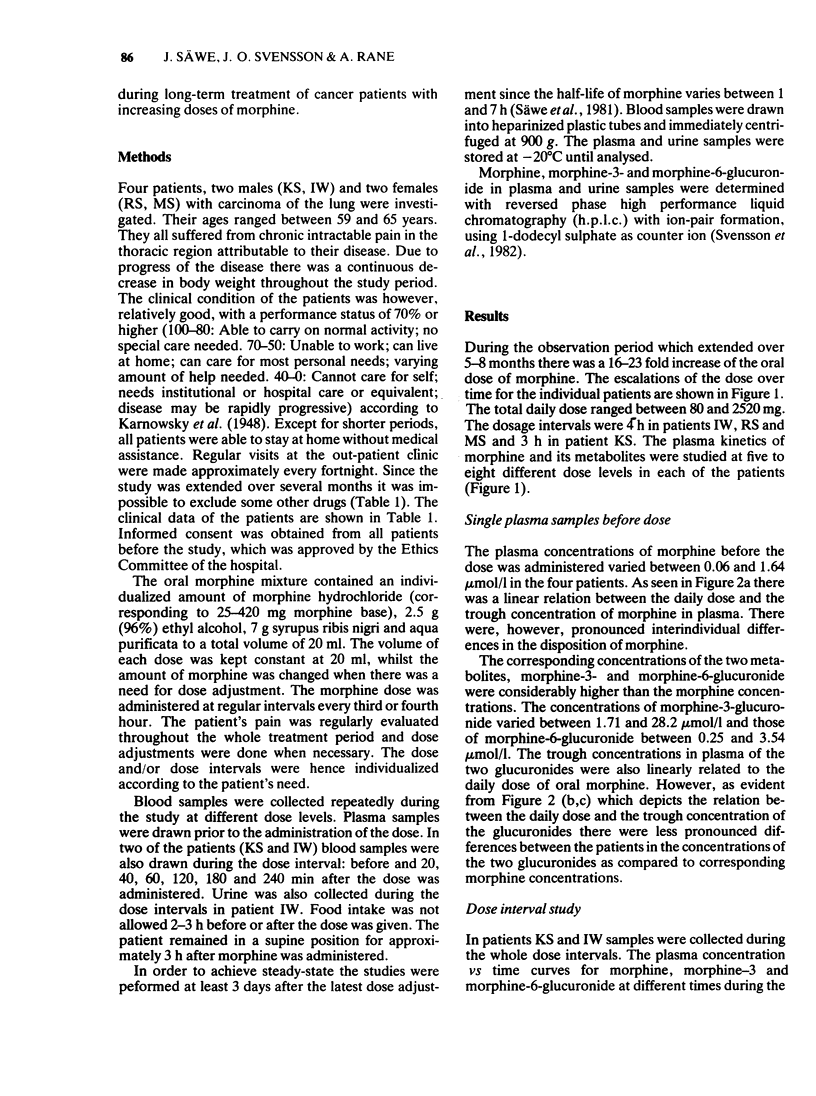
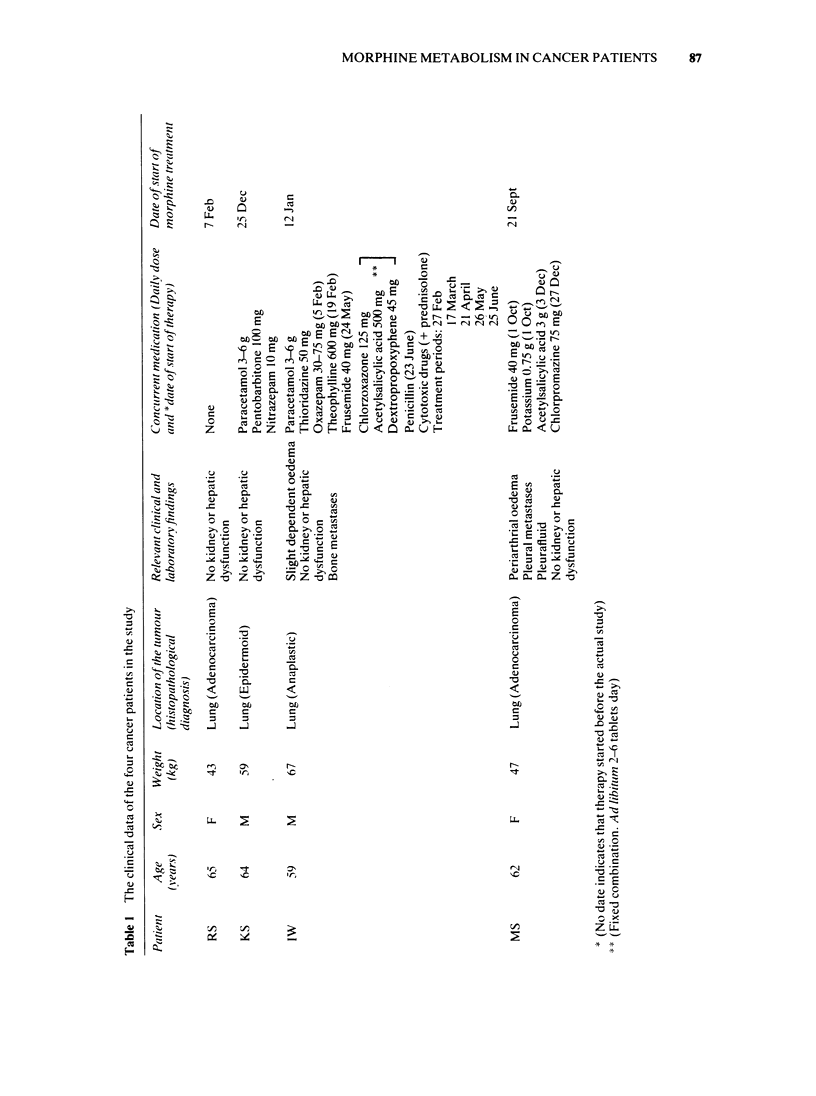
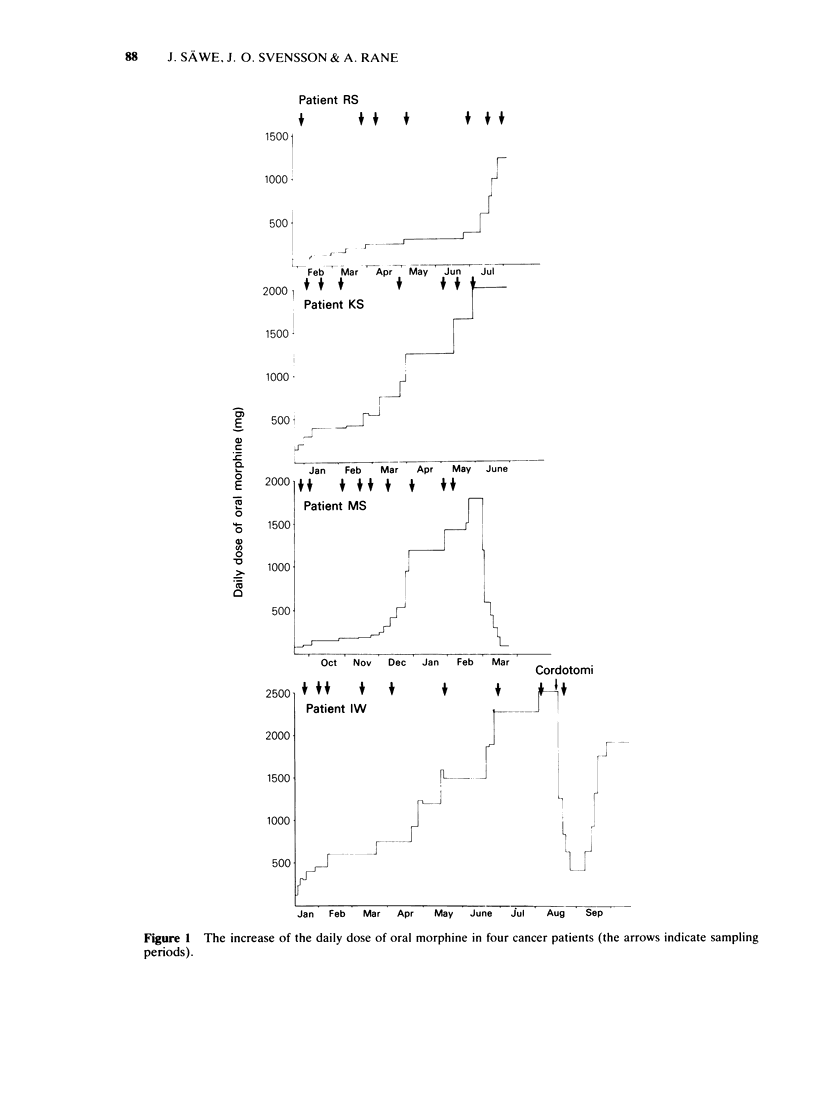
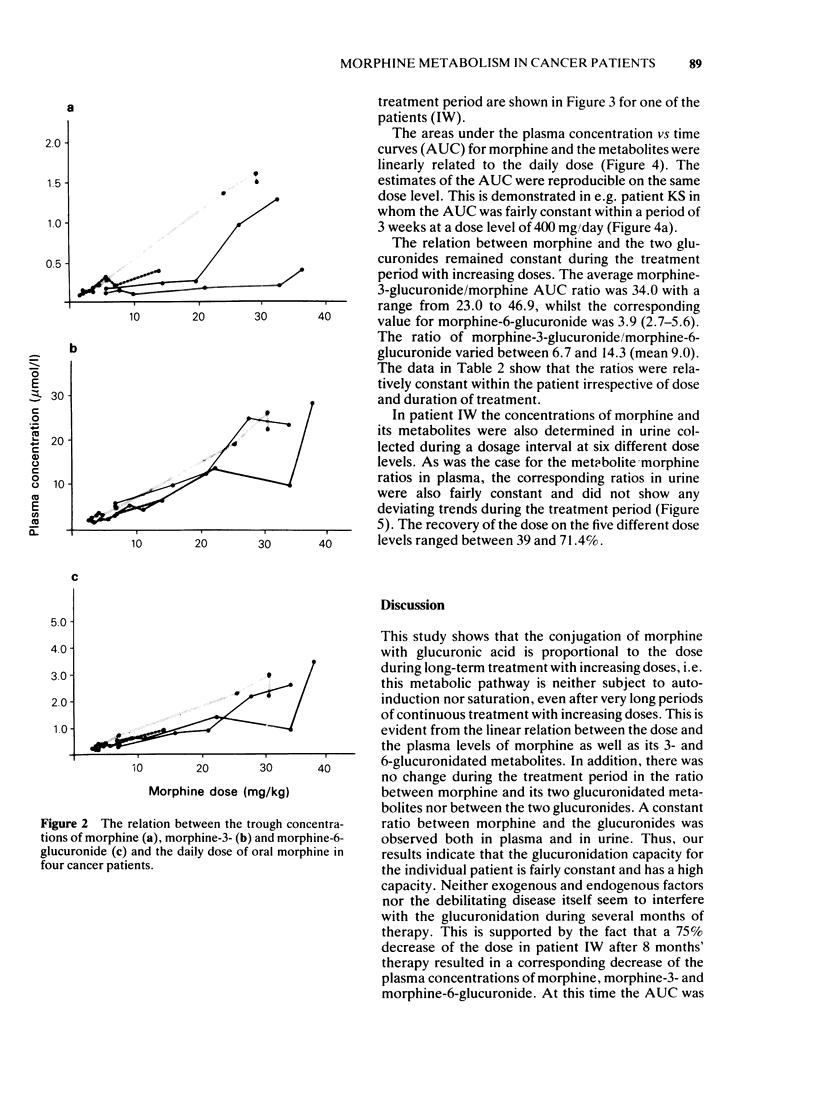

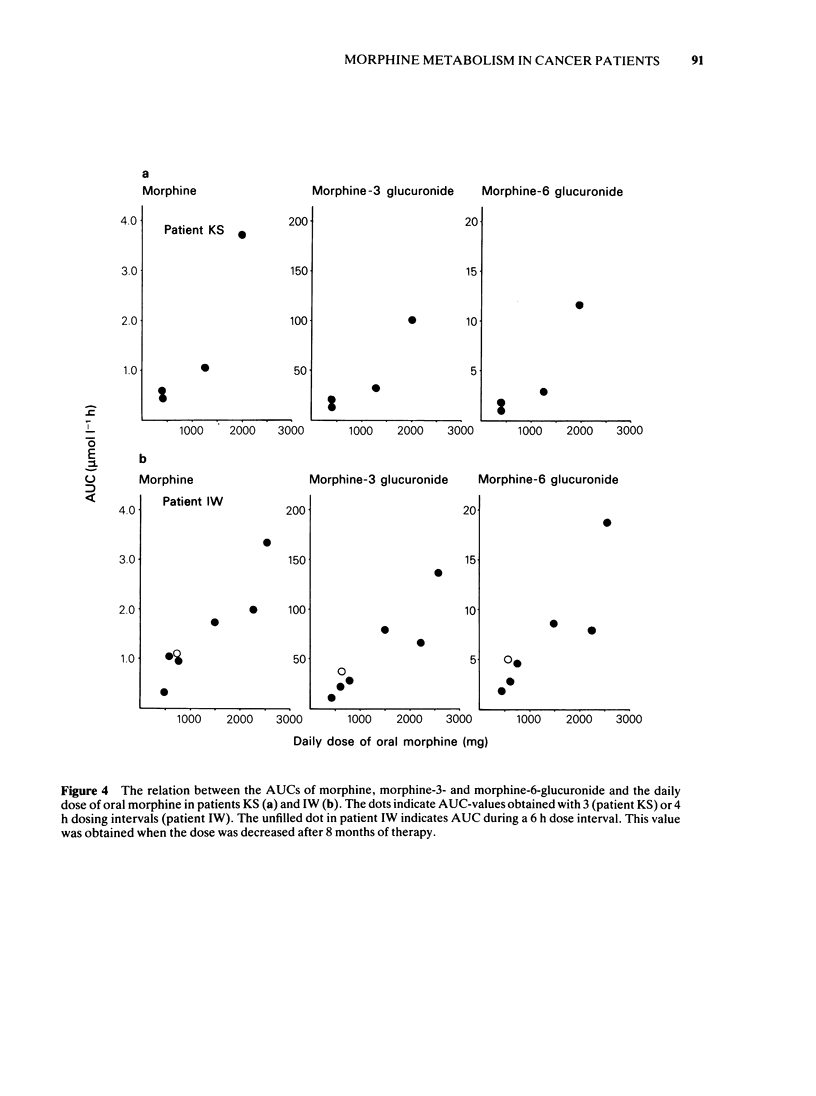
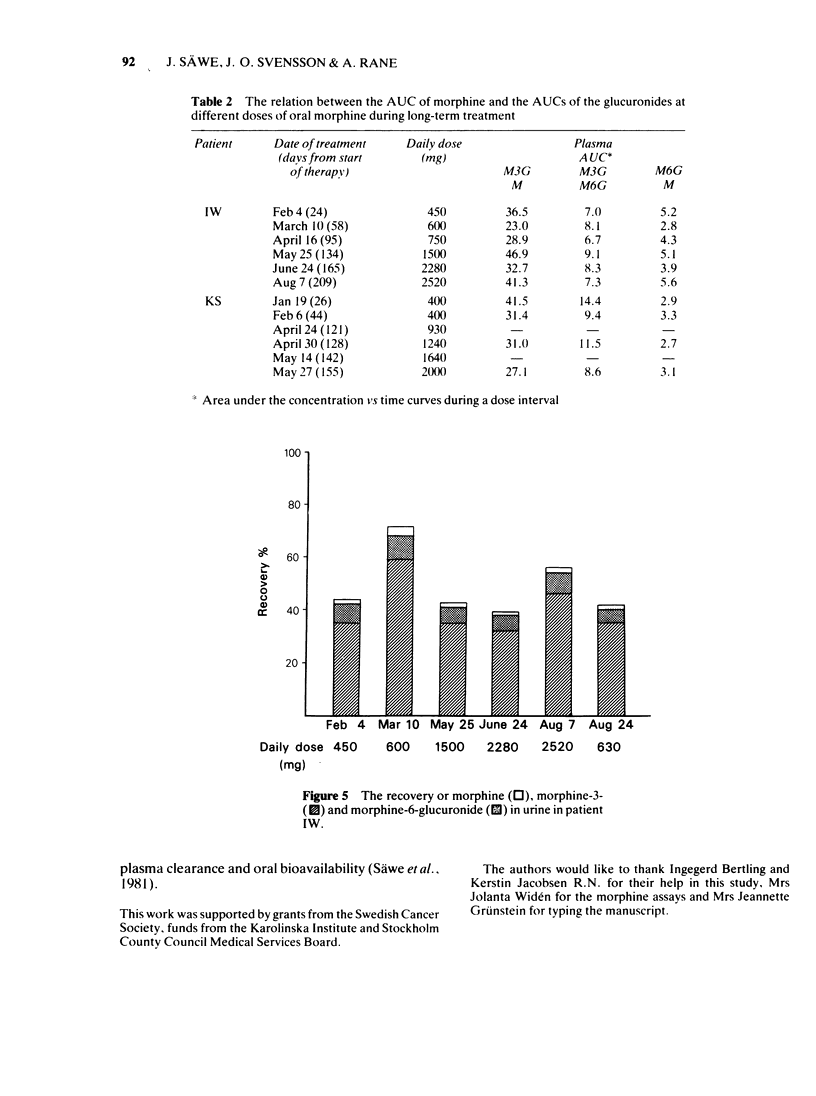

Selected References
These references are in PubMed. This may not be the complete list of references from this article.
- AXELROD J. Possible mechanism of tolerance to narcotic drugs. Science. 1956 Aug 10;124(3215):263–264. doi: 10.1126/science.124.3215.263. [DOI] [PubMed] [Google Scholar]
- Abrams L. S., Elliott H. W. Morphine metabolism in vivo and in vitro by homozygous Gunn rats. J Pharmacol Exp Ther. 1974 Apr;189(1):285–292. [PubMed] [Google Scholar]
- Bock K. W., White I. N. UDP-glucuronyltransferase in perfused rat liver and in microsomes: influence of phenobarbital and 3-methylcholanthrene. Eur J Biochem. 1974 Aug 1;46(3):451–459. [PubMed] [Google Scholar]
- ELISON C., ELLIOTT H. W. STUDIES ON THE ENZYMATIC N- AND O-DEMETHYLATION OF NARCOTIC ANALGESICS AND EVIDENCE FOR THE FORMATION OF CODEINE FROM MORPHINE IN RATS AND DOGS. J Pharmacol Exp Ther. 1964 May;144:265–275. [PubMed] [Google Scholar]
- Hahn E. F., Roffwarg H., Fishman J. Morphine metabolism in opiate dependent and normal men by double isotope techniques. Res Commun Chem Pathol Pharmacol. 1977 Nov;18(3):401–414. [PubMed] [Google Scholar]
- Heath E. C., Dingell J. V. The interaction of foreign chemical compounds with the glucuronidation of estrogens in vitro. Drug Metab Dispos. 1974 Nov-Dec;2(6):556–565. [PubMed] [Google Scholar]
- JOHANNESSON T., SCHOU J. ANALGESIC ACTIVITY AND BRAIN CONCENTRATION OF MORPHINE IN TOLERANT AND NON-TOLERANT RATS GIVEN MORPHINE ALONE OR WITH NEOSTIGMINE. Acta Pharmacol Toxicol (Copenh) 1963;20:213–221. doi: 10.1111/j.1600-0773.1963.tb01738.x. [DOI] [PubMed] [Google Scholar]
- MANNERING G. J., TAKEMORI A. E. The effect of repeated administration of levorphan, dextrophan and morphine on the capacity of rat liver preparations to demethylate morphine- and morphinan-type analgesics. J Pharmacol Exp Ther. 1959 Nov;127:187–190. [PubMed] [Google Scholar]
- MELLETT L. B., WOODS L. A. The distribution and fate of morphine in the non-tolerant and tolerant monkey. J Pharmacol Exp Ther. 1956 Jan;116(1):77–83. [PubMed] [Google Scholar]
- MULE S. J., WOODS L. A. Distribution of N-C-14-methyl labeled morphine. I. In central nervous system of nontolerant and tolerant dogs. J Pharmacol Exp Ther. 1962 May;136:232–241. [PubMed] [Google Scholar]
- Moldéus P. Paracetamol metabolism and toxicity in isolated hepatocytes from rat and mouse. Biochem Pharmacol. 1978;27(24):2859–2863. doi: 10.1016/0006-2952(78)90201-0. [DOI] [PubMed] [Google Scholar]
- Svensson J. O., Rane A., Säwe J., Sjöqvist F. Determination of morphine, morphine-3-glucuronide and (tentatively) morphine-6-glucuronide in plasma and urine using ion-pair high-performance liquid chromatography. J Chromatogr. 1982 Jul 9;230(2):427–432. doi: 10.1016/s0378-4347(00)80494-6. [DOI] [PubMed] [Google Scholar]
- Säwe J., Dahlström B., Paalzow L., Rane A. Morphine kinetics in cancer patients. Clin Pharmacol Ther. 1981 Nov;30(5):629–635. doi: 10.1038/clpt.1981.214. [DOI] [PubMed] [Google Scholar]
- TAKEMORI A. E. Enzymic studies on morphine glucronide synthesis in acutely and chronically morphinized rats. J Pharmacol Exp Ther. 1960 Dec;130:370–374. [PubMed] [Google Scholar]
- Yeh S. Y. Urinary excretion of morphine and its metabolites in morphine-dependent subjects. J Pharmacol Exp Ther. 1975 Jan;192(1):201–210. [PubMed] [Google Scholar]
- ZAUDER H. L. The effect of prolonged morphine administration on the in vivo and in vitro conjugation of morphine by rats. J Pharmacol Exp Ther. 1952 Jan;104(1):11–19. [PubMed] [Google Scholar]


